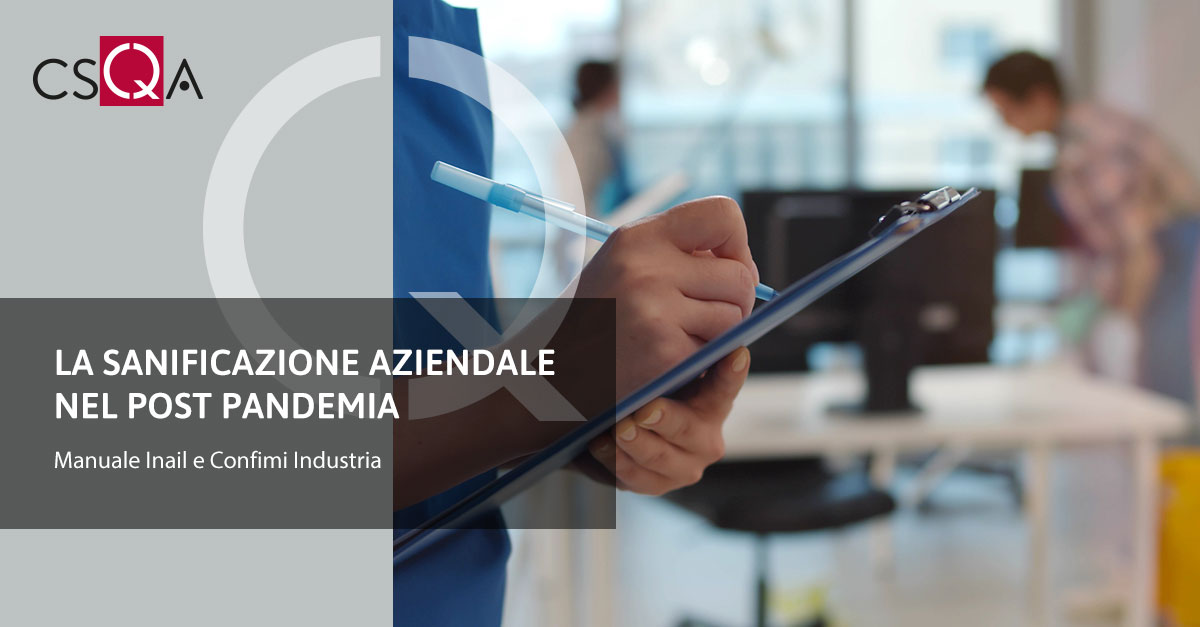 Inail and Confimi Industria have created the practical and easy-to-read manual "Sanitization in the post-pandemic. The standardization of processes”.
Inail and Confimi Industria have created the practical and easy-to-read manual "Sanitization in the post-pandemic. The standardization of processes”.
The publication stems from an analysis of the current situation which highlights a growth trend in the world population which is increasingly concentrated in urban areas, leading to an inevitable and continuous sharing of living and working spaces which, if not adequately and continuously maintained "healthy", they can represent one of the ideal vectors for the spread of diseases.
Added to this is the recent SARS CoV-2 pandemic which has produced a change of attitude towards sanitation, generating the need, common to many production realities, to take on a new job: that of the cleaner.
The document is a guide on sanitization activities in the civil sector and is aimed at both employers who intend to carry out sanitization activities internally and the cleaning companies entrusted with the service.
Document objectives
In 158 pages, the publication, which is not mandatory, seeks to achieve the following objectives:- recognize sanitation as an element of primary importance not only in relation to the SARS CoV-2 pandemic emergency but as a "standard practice" for preventing the spread of infectious diseases at work. A topic that offers insights, also for the next few years, in relation to the hygiene of the workplace as well as the health and safety of both workers in general and operators engaged in company cleaning and sanitization
- represent a guidance document on sanitation activities
- disseminate knowledge of this topic transversally among workers, employers and all prevention figures, hoping to be a reference for integrating the training courses dedicated to the training of PSPs.
- draw up a work plan
- assign tasks and responsibilities
- define the frequency of cleaning, disinfection and sanitization activities
- carry out risk assessment also based on the specificity of each environment and the instruments used, aiming to make companies aware of the culture of cleanliness
- promote the adoption of cleaning and sanitizing processes as a "standard" practice, going into the specifics of the choice of instruments to be used, in the description of the methodologies to be followed, providing indications for the correct management of cleaning, information on the appropriate use of the machines, equipment and chemical cleaning and disinfectant products commonly used, in the training of the operator, in the control of the result and in the description of the possible risks that may derive from carrying out this activity.
Summary
- Introduction and purpose
- Glossary
- Statistics
- Main normative and bibliographic references
- Sanitization
- General principles and tools
- Planning and organization of sanitation activities
- The organization of sanitation activities
- Control of the result of the sanitation service
- The tools for controlling the levels of cleanliness and environmental hygiene
- Information, education and training of workers
- In company cleaning and sanitization processes
- Work in safety
- Risks deriving from the failure to sanitize the systems
- Of air conditioning
- Hand care and cleaning
- Personal Protective Equipment (PPE)
- Health surveillance for cleaning and sanitation workers
- Company internals
- Attachments: the sanitization of non-sanitary environments - the washroom area
- Appendix
- Standard intervention frequencies by type of environment
To consult the complete document ⇒